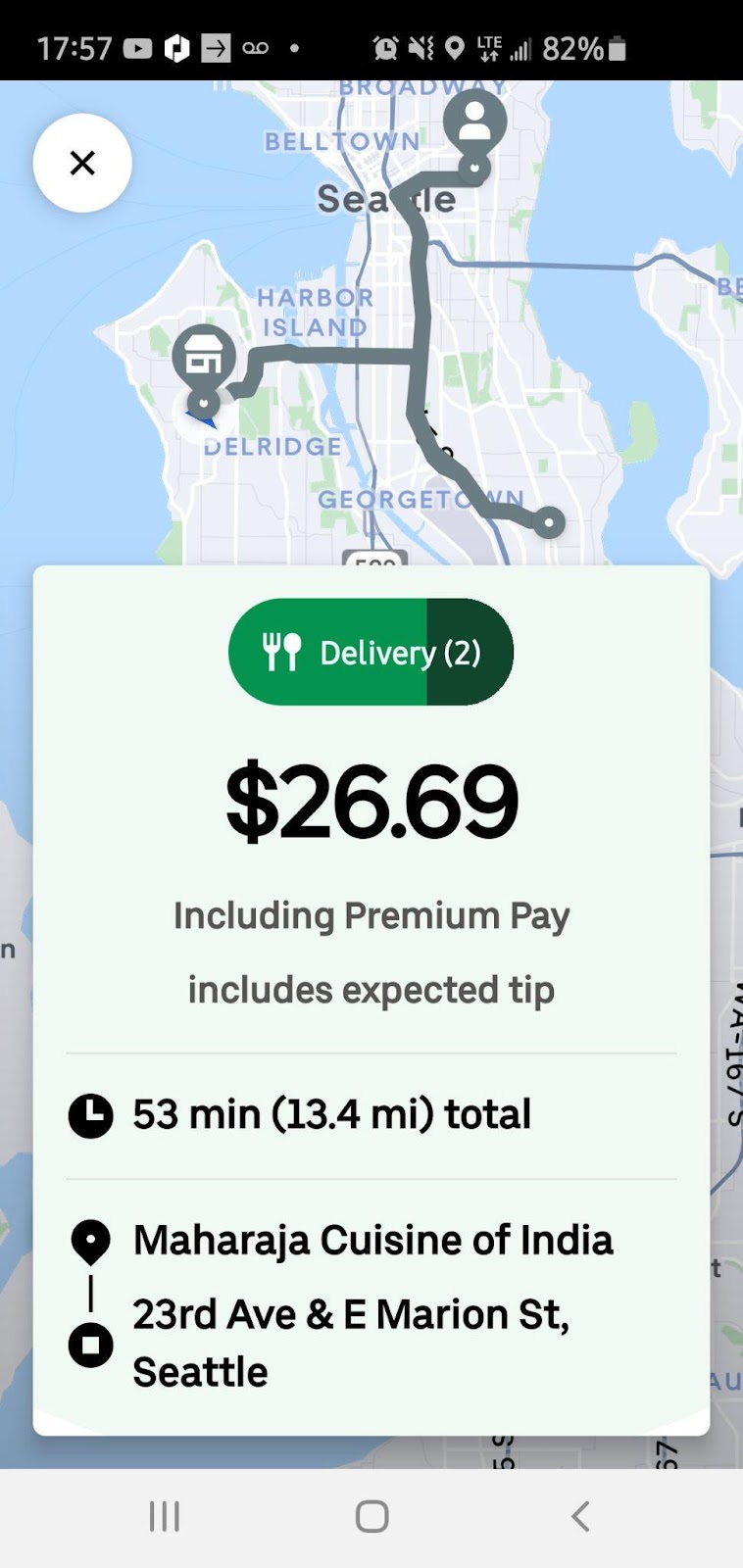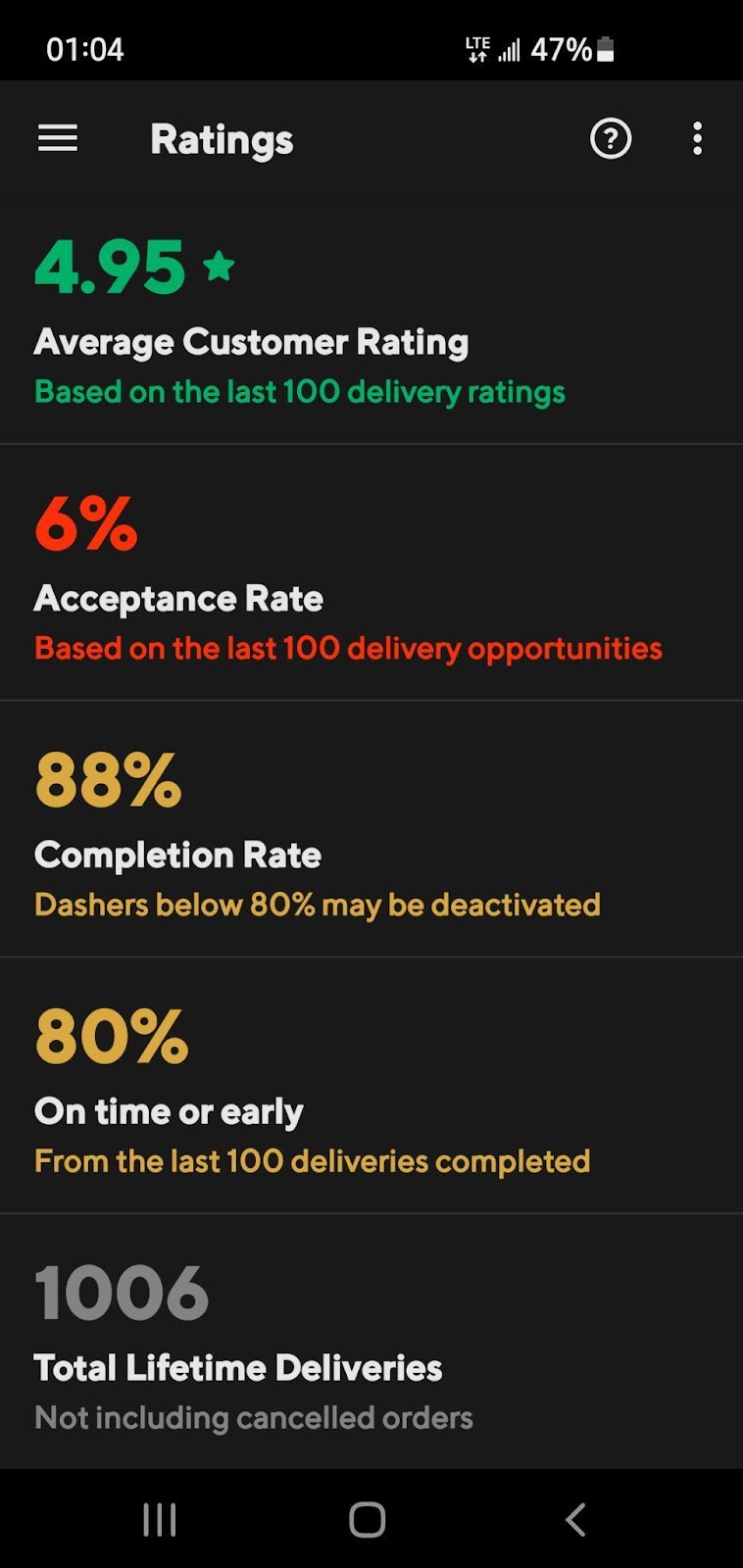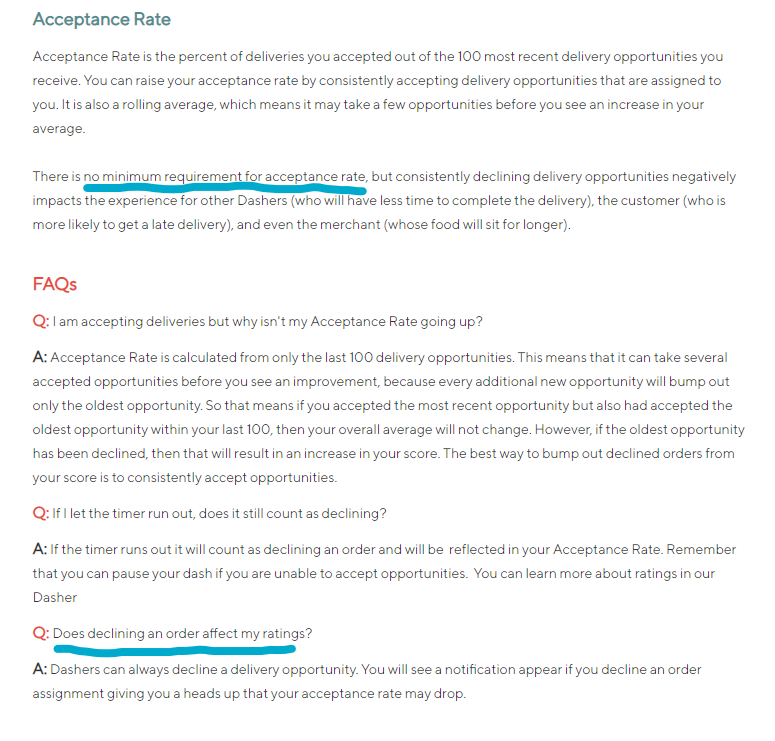(ALWAYS) DECLINE These Orders When Driving For Food Delivery Apps - Notes From An Experienced Driver

Did you know you have the right to accept/decline orders and multiapp with more than one gig economy app at a time? Well if you didn't, you should! You're an independent contractor and you have the final say when it comes to deciding to accept an order (offers) while driving for food delivery apps such as DoorDash, Uber Eats, Grubhub, etc. With the ability to accept or decline requests, you'll need to exercise that right by declining certain orders that do not help you make money driving for any of these apps. To be the most efficient and to increase your earnings you should always decline the following orders when gig working!
1. Always Decline No Tip Trips Orders
When it comes to any of these food delivery apps, the customers have a choice to leave the driver a tip. The tips from these trips or offers become lifelines for the drivers as they can make or break your shift when you're working. Did you know, over 56% of gig workers' earnings come from tips? If you're not getting tips then you're getting the base pay from these apps. The base pay isn't feasible if you want to scale. My mentality when I'm doing these orders is using the 'no tip no trip' mindset. If I can know right away if an order has no tip, I'm not even going to bother doing the order. Each of these delivery apps has its own quirks on how the tip is shown to the driver so you'll need to be aware of how that works on each app. For example, DoorDash doesn't show you the full tip amount on the offer screen, so some guesswork comes into play. Uber Eats lets the customer change the tip up to an hour after the delivery has been completed so there is a chance you can get a tip more, less, or none depending on your customer service. Grubhub shows you the full payment on the offer screen but it doesn't tell you what the tip amount is from that pay until you've finished your order. If you want to avoid all that guesswork and let a driver helper tool do it for you, you can use the Para app as it can tell you more in-depth details of an order before you accept it. If you understand what the base pay is for your market on any app then you can definitely tell if an order has no tip. If you can't tell then at least the Para app can help you with Grubhub offers by giving you an estimated tip amount for the order and with Uber Eats to a certain extent. So remember regardless if you do your own guesswork or use delivery driver tools like Para to determine your tip amount, if the customer didn't tip, just don't take the trip. Look at the example below, the base pay for me in Seattle is about $5.50. This is definitely a no-tip trip you should always decline!
Pro Tip: Always decline low-paying orders from fast-food chains. They have a track record of having more delays than traditional restaurants.

2. Always Decline Low Tip Orders Or High Mileage Orders
While a lot of customers may tip on these delivery apps, many may not tip to the rate you'd like with the order you're looking at. If you're looking at DoorDash offers or Uber Eats offers and notices that the customer is tipping but the distance may be very far, it may not be worth it for you. The low tip offers don't really make much sense if the order you're picking up is big or has many items. Most low tip offers are essentially low paying offers as the tip doesn't feel like it is there. You want to feel compensated for your work if you will be picking up bigger orders or orders that are more complicated. Also in the restaurant industry and the US culture, it is very common that a 15% tip is given on any check. This is not required by anyone to do, but it's definitely a custom that is appreciated by anyone working in the restaurant industry. You fall into that category too. If a customer orders $200 worth of food and tipped you $2 to deliver it, that would definitely fall short of the common 15% tip percentage. During your food delivery gig, not only are you picking up the order, but you'll also be dealing with other things such as building access, street access, lighting, and other complications that may be offset by a decent customer tip. Keep those things in mind when you are looking at a low-tip order. A common trend I see is that customers may order food from very far away as 10-20 miles away from the restaurant but the tip amount doesn't really justify the driver to accept that offer. Remember if the mileage is high, see how much the tip is from that order. You may be better off accepting a DoorDash offer that has a bit lower pay (maybe even low tip) and has less mileage. The high mileage orders may cut into your time when you're working, it is better that you have more options to look at than to be stuck with 1 option that takes so much time. Remember that the mileage you use on an order is a business expense. Look at the DoorDash example of a low-tip trip. The base pay for my market in Seattle is $5.50, this order is paying $6.00 so you have an idea what the tip is.



The order is a short distance though so this may be a type of order you might be willing to take because it is quick and easy. Most of the time I don't take these orders even though it's quick. Just something you should consider when you're looking at your offers.
3. Always Decline Stacked Orders Going Opposite Directions
For whatever reason, the DoorDash driver app and even the Uber Eats driver app want to stack orders for the driver that goes opposite directions. I've been seeing it more and more often and it baffles me how doing that would help the driver but also satisfy the customer. Your customer wouldn't be too happy that you're doing a stacked delivery from one side of town to the other. That situation might cut into your tip, especially on Uber Eats as customers can adjust the tip. As for you the driver, taking stacked offers going opposite directions will eat into your time and your efficiency. Wouldn't it just be better to take a stacked offer going close to the same direction? You can solve this by multiapping. If you DoorDash multiapp or Uber Eats multiapp, you can stack 2 orders going the same direction on both apps and it'll be a better experience for the customer and for you. Even if you decide not to take 2 orders on 2 different apps at once, you can hope for a stacked offer from the app you're currently picking up from. Don't subject yourself to accepting the stacked offers going in the opposite direction. With the Para app, you can stack multiple orders easier as you have more metrics to look at. You can multi-app with Para by using their Accept/Decline feature. Para will show you critical job information before you accept an offer and also allow you to decline multiple offers Looking at the DoorDash offer below, imagine if the distance was further away, would you take this order going opposite directions? Even though this order is a couple of blocks away going opposite directions, I still would take it because it has no tip in it.


4. Acceptance Rate Doesn't Matter
If you read through the Terms of Service from any of these delivery platforms, you'll notice that your acceptance rate doesn't really matter. Remember you're an independent contractor, and you have the right to accept or decline the offer given to you. You cannot be punished by termination for doing so. I'm sure these apps do have some algorithm that may be annoying to the driver if you decline a lot, but it is not something proven at the moment. Just know if you spend more time accepting the better offers and declining the bad offers you should make more money efficiently. Even if acceptance rate is a part of your Dasher metrics, it doesn't mean anything compared to other DoorDash metrics like completion rate or time metrics. DoorDash is the one food delivery app that keeps on reminding drivers of their acceptance rate, but in reality, is just a psychological tactic to make drivers think they're not doing their job. Uber Eats doesn't even care to mention the acceptance rate when you decline an offer. So always keep in mind that the acceptance rate doesn't matter. What matters is what orders you'll always decline so you can spend more time on profitable orders.

(Source: DoorDash Dasher Ratings Explained 2022)

(Source: DoorDash Dasher Ratings Explained 2022)
5. Your Market and Metrics Will Determine What Orders To Always Decline
If you're reading up til now you may have realized I've been vague about what is a low-paying offer or what is a low-tip offer in terms of an actual figure. Well, that is because what I declare a low pay or low tip trip may be different from you. You will have your own numbers to play with and your market may influence the type of orders and pay you to get from those orders. I usually go by the general US custom of the 15% tip percentage if I'm unsure what dollar amount is acceptable. I also have a set lowest dollar amount I'm willing to take for an order. You should use that metric as well. Just remember that your market and volume of business dictate what types of orders you should always decline.
More Articles

Delivery Drivers: Tricks To Get More Orders On Door Dash, Postmates, Uber Eats, and GrubHub

Top 5 Best and Affordable Electric Vehicles for Food Delivery and Rideshare Drivers



